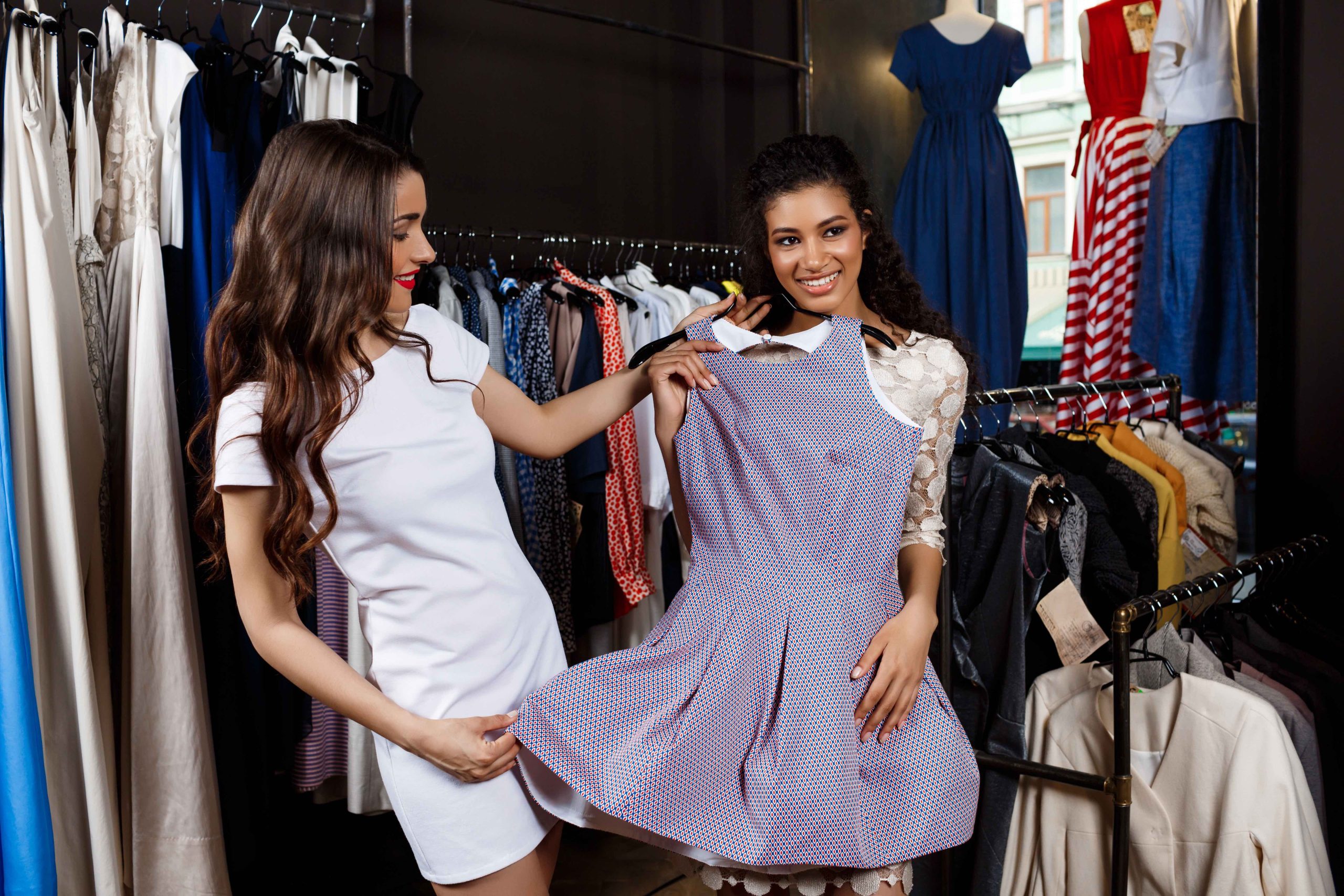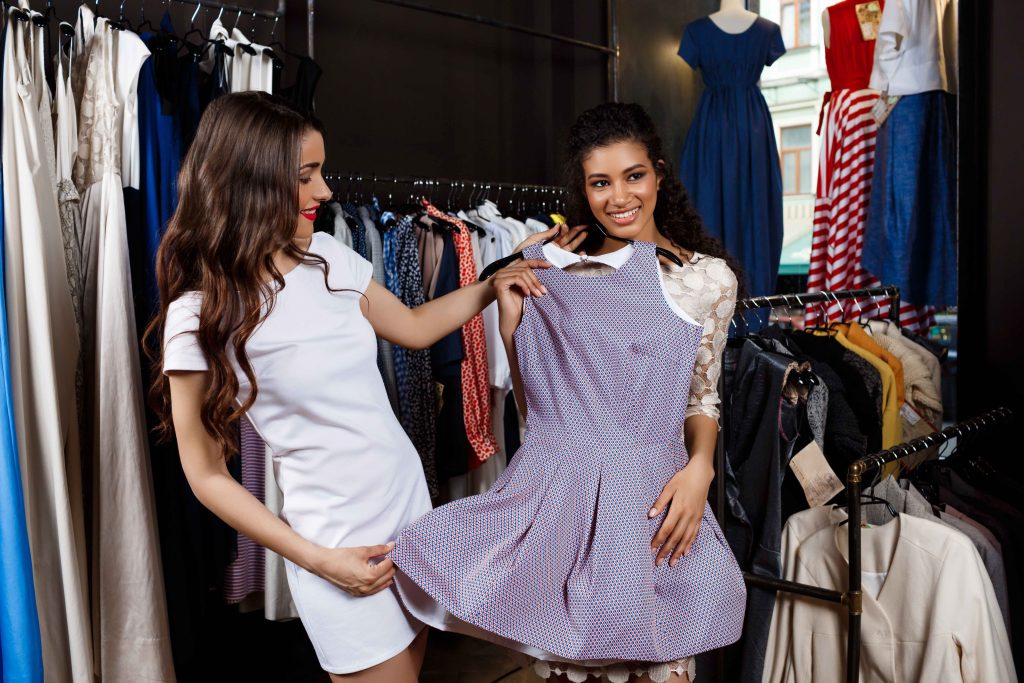The fashion industry is witnessing a seismic shift in consumer behaviour. Unlike previous generations, which prioritised ownership and long-term investment in luxury fashion, today’s environmentally conscious consumer opts for rental fashion. Renting allows them to access the newest fashion without the financial burden or the environmental cost of purchase—especially when it comes to one-time occasion-wear. So, will the future retailer offer new, rental and secondhand fashion?

The fashion industry is one of the largest contributors of environmental degradation, producing substantial waste and consuming immense natural resources. Per UN Environment Program: “The fashion industry produces between 2 to 8 per cent of global carbon emissions… it takes around 2,000 gallons of water to make a typical pair of jeans. Every second, the equivalent of one garbage truck of textiles is landfilled or burned. If nothing changes, by 2050 the fashion industry will use up a quarter of the world’s carbon budget.”
In response to these alarming statistics, a growing segment of consumers is turning towards sustainable fashion practices. One such practice gaining prominence is rental fashion, where customers borrow clothes for a specific period instead of purchasing them. This model offers a stylish, affordable, and eco-friendly alternative to the traditional consumption of clothing. As consumer awareness around sustainability grows, rental fashion is carving a niche in the fashion industry and the big players are entering this space.
Zara launched a pre-owned platform in European markets and Amazon Luxury Stores entered resale with “Hardly Ever Worn It”. Nuuly, Urban Outfitters’ fashion rental platform, reported growth and profits. Per BoF: ‘Parent company URBN, which also holds Anthropologie, Free People and Urban Outfitters under its belt, reported net sales in its rental business jumped 56 percent for the quarter ending Jan. 31 to $113 million. Nuuly also saw its operating income increase to $5.2 million for the quarter, reversing a $1 million loss in the same period last year. Sales for the full fiscal year rose 60 percent, to $378 million, with operating income reaching $13.3 million.’ Let’s take a closer look at this trend.
The Rise Of Rental Fashion
The concept of rental fashion is not new. Historically, the idea was predominantly associated with niche markets such as tuxedo rentals for weddings or costumes for themed events. However, it wasn’t until the late 2000s that the concept expanded into mainstream fashion, driven by the need for sustainable practices and changing consumer attitudes towards ownership. Post-pandemic consumer behaviour drove this demand for rental fashion, particularly for expensive, luxury brands as rental is a cost-effective way to refresh the wardrobe without purchasing new apparel. The other major factor driving change was increasing consumer awareness of their environmental footprint and the will to practice responsive retail.

The rise of social media has played a crucial role in the popularity of rental fashion. Platforms like Instagram fuelled the demand for a diverse wardrobe as consumers sought new outfits to showcase online. Rental services provide an affordable and eco-conscious solution, making them particularly attractive to younger, environmentally-conscious generations. What’s more, Gen Z is heavily influenced by fashion bloggers, YouTubers, and Instagram personalities like Emma Chamberlain and Danielle Peaze, who share their experiences with rental fashion online, encouraging their followers to experiment with rental fashion, further driving the trend.
One of the key drivers behind this trend is the consumer’s concern for sustainability. As environmental issues become alarming, this generation has grown increasingly aware of the negative impact fashion has on the planet. A report by ThredUp reveals that 33% of Gen Z consumers have rented clothes, and 67% believe that clothing rental is a more sustainable alternative to traditional shopping. By choosing to rent instead of buy, Gen Z is helping to reduce textile waste and the carbon footprint associated with the production and disposal of garments.
Affordability is a major factor driving Gen Z towards rental fashion. With the rising cost of living and the financial pressures facing younger generations, rental fashion offers an affordable alternative to purchasing apparel and accessories. Platforms like ‘MyWardrobeHQ’ offer rental options for luxury items at a fraction of the retail cost. This enables Gen Z to indulge in high-end pieces for parties, weddings, or business meetings without committing to expensive purchases that may only be worn a few times. With easy-to-use mobile apps, fast delivery options, and the facility to return garments after a single use cater perfectly to a generation that values convenience and efficiency.
“Rent the Runway” fashion-rental service operates on a hybrid digital and logistics-driven business, allowing consumers to rent individual pieces, sign up for a rotating closet subscription, or purchase second-hand items. It disrupted traditional ownership models in fashion, leveraging logistics, data analytics and strategic designer collaborations to create a fashion-as-a-service model that aims to democratise access to luxury fashion, reduce consumption, and offer a comprehensive selection to style-conscious consumers. In recent years, Rent the Runway expanded its resale operations, partnering with Saks Off Fifth to supply formerly rented merchandise. “The retailer of the future is going to offer ultimate choice and flexibility to the customer, whether she wants to buy it new, buy it secondhand, rent it a la carte or use it as part of her rental subscription,” Jenn Hyman, founder and CEO of Rent the Runway told BoF. “Resale for us is giving her that choice.”
Moreover, consumers can “try before they buy” something. “Rental is 100 per cent the next form of discovery in fashion,” Victoria Prew, founder and CEO of rental platform, Hurr tells Vogue. “If someone wants to rent something for 30 days, and then falls in love with it, how great that they can [go on to] make a considered purchase, knowing that that piece fits them perfectly, that it’s a higher-quality garment, and they’re going to love that piece hopefully for many years.”

Why Rental Fashion Is Better Than Purchase
Here are five reasons why renting apparel and accessories is a better option than purchasing everything:
- Cost-Effective Solution: renting allows access to high-quality luxury fashion at a fraction of the cost of purchase. This is beneficial for occasion wear, which are rarely worn again.
- Sustainable Fashion: rental fashion reduces the demand for fast fashion, which is a major contributor to environmental degradation. By reusing clothes, it cuts down on waste and promotes a circular economy.
- Variety: renting provides the opportunity to try out different styles without committing to a purchase. It keeps the wardrobe fresh and versatile without the need for constant shopping.
- Space Saving: rental fashion eliminates the need for storing a large wardrobe, freeing up closet space. This is ideal for those living in smaller spaces or prefer a minimalist lifestyle.
- Access to Special Outfits: renting gives access to exclusive formal wear or rich traditional attire, that might be expensive or impractical to purchase outright for one-time use.
Top Rental Fashion Services
- Nuuly: Offering a subscription starting at $98 per month, Nuuly allows customers to rent up to six items from an extensive collection of trendy, high-quality clothing. The service includes brands like Anthropologie, Free People, and Urban Outfitters, making it an excellent choice for fashion-forward individuals seeking variety and value.
- Armoire: At $89 per month, Armoire provides a curated clothing rental experience tailored to your style preferences. Members can access a rotating wardrobe of designer pieces, perfect for work, casual, or special occasions. The service also offers flexible options for swapping items as needed.
- Rent the Runway: A pioneer in clothing rentals, Rent the Runway starts at $94 per month and offers an extensive library of designer garments for every occasion. Whether for weddings, formal events, or everyday wear, it provides flexibility and convenience with multiple membership tiers and swap options.
- Vivrelle: Starting at just $45 per month, Vivrelle specializes in accessories, including luxury handbags, jewellery, and more. Members can choose from a vast selection of coveted designer pieces, making it ideal for those looking to elevate their outfits without committing to a purchase.
- Cocoon: Charges £79 for access to one bag per month from brands like Saint Laurent or Gucci. Kering invested in the company, which raised an estimated £2.5 million.
- Vince Unfold: This premium service starts at $175 per month and focuses on timeless, minimalist pieces from the Vince brand. Members receive a rotating selection of elegant, high-quality clothing perfect for those who value sophisticated style and effortless luxury.
- Tulerie: Tulerie is a peer-to-peer fashion rental platform that’s free to join. Members can borrow and lend high-end clothing and accessories, creating a sustainable and community-driven approach to luxury fashion sharing.
- Nova Octo: Designed for formal and black-tie events, Nova Octo offers a one-time rental fee per item. It features a curated selection of couture gowns and high-end evening wear, providing access to luxurious outfits for special occasions.
- Switch: Starting at $55 per month, Switch focuses on designer jewellery rentals, offering a wide variety of statement pieces. It’s an affordable way to access high-end accessories for everyday looks or special events, with the flexibility to swap monthly.
- Elysewalker Borrow: Elysewalker Borrow offers a one-time rental fee per item for its curated collection of designer pieces. The service caters to individuals seeking exclusive and chic outfits for special events without the need for a long-term commitment.
- HURR Collective: The London-based rental fashion platform founded in 2019 has built its business around a core principle of offering sustainable and high-quality rental clothing to a Gen Z audience. Their platform allows users to rent everything from essentials to designer wear. With an emphasis on high-end fashion, HURR Collective appeals to fashion-forward customers who want to experiment with luxury garments without breaking the bank or contributing to the environmental toll of fashion.
- Pickle: Despite being relatively new, Pickle has gained traction thanks to TikTok, where #ShopOnPickle appears on nearly two million videos. The platform has also attracted influencers like Remi Bader, Lauren Wolfe and Kit Keenan, who listed items for rent!
FAQs on Rental Fashion
- How does rental fashion work?
Rental fashion platforms allow customers to borrow clothes or accessories for a set period, typically ranging from a few days to a month. Users pay a rental fee, which is often a fraction of the retail price, and return the item after use.
- Is rental fashion hygienic?
Yes, most rental fashion companies prioritise hygiene. Items are professionally cleaned and sanitised before being sent to the next customer. Many companies use eco-friendly cleaning methods to align with their sustainability goals.
- What types of clothing can I rent?
You can rent almost any type of clothing, including formal wear, casual outfits, maternity clothing, and even seasonal items like winter coats or summer dresses. Some platforms also offer accessories like handbags and jewellery.
- Is rental fashion affordable?
Yes, rental fashion is often more cost-effective than buying, especially for high-end or designer items. It allows consumers to access premium clothing at a fraction of the price, making it an attractive option for special occasions or regular wardrobe refreshes.
- Can I purchase an item I’ve rented?
Many rental platforms offer a “try before you buy” model, where customers can purchase rented items at a discounted price if they choose to keep them. This provides a flexible option for those who fall in love with a piece they’ve borrowed.
In conclusion, rental fashion is not just a fleeting trend for Gen Z; it’s a reflection of a cultural shift towards sustainability, affordability, and convenience. With increasing numbers of consumers embracing the benefits of renting over owning, fashion brands and rental platforms are poised to play an essential role in shaping the future of the industry. If you’re part of this fashion-forward generation or are simply curious about joining the rental revolution, start by checking out some of the top rental platforms today. Experiment with new styles, enjoy the freedom of variety, and make a positive impact on the environment — all without the burden of ownership!!

Jasmeen Dugal is Associate Editor at FashionABC, contributing her insights on fashion, technology, and sustainability. She brings with herself more than two decades of editorial experience, working for national newspapers and luxury magazines in India.
Jasmeen Dugal has worked with exchange4media as a senior writer contributing articles on the country’s advertising and marketing movements, and then with Condenast India as Net Editor where she helmed Vogue India’s official website in terms of design, layout and daily content. Besides this, she is also an entrepreneur running her own luxury portal, Explosivefashion, which highlights the latest in luxury fashion and hospitality.












